I am transiting my project to iOS7. I am facing a strange problem related to the translucent navigation bar.
I have a view controller and it has a tableview as subview (let's call it ControllerA) . I init a new uinavigationcontroller with the controllerA and present it modally using presentviewcontroller. The presented view controller's table view is blocked by the navigation bar. I set the automaticallyAdjustsScrollViewInsets to YES but the result did not change. I knew I can set the edgesForExtendedLayout to UIRectEdgeNone, but it will make the navigation bar no more translucent.

After that, I tried to create a new view controller for testing. It contains almost the same elements. But the result is much different. The table view content does not get blocked.

Conclusion
- Two View Controllers' automaticallyAdjustsScrollViewInsets set to YES
- The project is not using storyboard
- The first one is created at Xcode 4.6, The second one is newly created on Xcode 5
- I have compared two classes xib and code, not much different